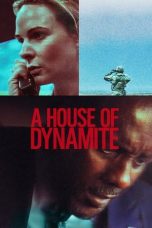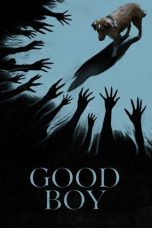Peeping Tom (1960) Movie Review: A Disturbing Masterpiece That Redefined Horror
Peeping Tom (1960) is a British psychological horror film directed by Michael Powell, notorious for its controversial subject matter and unsettling portrayal of voyeurism. Released in the same year as Alfred Hitchcock’s Psycho, Peeping Tom initially shocked audiences and critics alike, leading to a severe backlash that nearly ended Powell’s career. However, over the years, the film has been reassessed and is now regarded as a groundbreaking work that explores the dark intersections of cinema, psychology, and obsession.
Plot Overview
The film follows Mark Lewis (Karlheinz Böhm), a reclusive and socially awkward young man who works as a focus puller at a film studio by day and a part-time photographer by night. Mark has a disturbing secret: he is also a serial killer, driven by a compulsion to film his victims as they experience terror in their final moments. Using a camera with a concealed blade, Mark captures their fear on film, creating a morbid collection of snuff-like footage.
As Mark continues his killing spree, he develops a relationship with his downstairs neighbor, Helen (Anna Massey), a sweet and curious young woman who becomes intrigued by Mark’s solitary nature. However, as Helen begins to uncover the truth about Mark’s dark past and his horrifying hobby, the film spirals into a chilling exploration of voyeurism, trauma, and the perverse power of the camera.
IMDb Rating and Reception
Peeping Tom holds an IMDb rating of 7.6/10, a testament to its enduring impact on the horror genre and its later recognition as a cinematic masterpiece. Upon its release, the film was met with scathing reviews, with many critics condemning it as morally reprehensible and grotesque. The intense negative reaction caused significant damage to Powell’s career, relegating the film to obscurity for many years.
However, Peeping Tom was later rediscovered by critics and filmmakers, who praised its innovative approach to horror and its daring exploration of taboo subjects. Today, it is celebrated as a cult classic and an essential work in the horror canon, influencing a wide range of films that deal with the psychology of killers and the ethics of voyeurism.
Cast and Performances
Karlheinz Böhm delivers a haunting performance as Mark Lewis, bringing a chilling calmness to the role that makes his character both sympathetic and terrifying. Böhm’s portrayal is complex, revealing the deep psychological scars that drive Mark’s actions, particularly his traumatic upbringing at the hands of his father, a psychologist who subjected him to cruel experiments on fear.
Anna Massey is equally compelling as Helen, whose innocence and kindness stand in stark contrast to Mark’s twisted world. Her performance adds emotional depth to the film, as Helen’s growing affection for Mark and her gradual realization of his dark side create a palpable sense of dread. The supporting cast, including Moira Shearer as one of Mark’s victims, adds to the film’s unsettling atmosphere, enhancing the tension with each interaction.
Themes and Analysis
Peeping Tom is a film that delves into the darkest corners of human psychology, particularly the compulsion to observe and be observed. The movie’s most disturbing aspect is its exploration of voyeurism—not just as a perverse hobby, but as a metaphor for the act of filmmaking itself. Powell blurs the line between audience and participant, forcing viewers to confront their own role as voyeurs in the consumption of horror and violence on screen.
The film also examines the impact of trauma and the ways in which it can distort reality and morality. Mark’s obsession with capturing fear on film is rooted in his own childhood experiences, where he was subjected to constant surveillance and psychological manipulation by his father. This backstory adds a layer of tragedy to Mark’s character, complicating the viewer’s response to his monstrous actions.
Moreover, Peeping Tom serves as a critique of the exploitative nature of cinema, suggesting that the camera can be both a tool of art and a weapon of destruction. The film’s disturbing imagery and provocative themes challenge the audience to question the ethics of what they choose to watch and why, making it a deeply unsettling but intellectually stimulating experience.
Direction and Cinematography
Michael Powell’s direction in Peeping Tom is masterful, combining a deep understanding of visual storytelling with a willingness to push the boundaries of what was acceptable in cinema at the time. The film’s use of color, lighting, and composition creates a disorienting and claustrophobic atmosphere, reflecting the disturbed mind of its protagonist. Powell’s decision to show much of the horror through Mark’s camera lens implicates the audience in the acts of violence, heightening the sense of unease.
The cinematography by Otto Heller is particularly notable for its innovative use of point-of-view shots, which allow the viewer to see the world through Mark’s eyes. This technique not only intensifies the horror but also reinforces the film’s themes of voyeurism and the power dynamics inherent in watching and being watched. The film’s meticulous attention to detail, from the sinister set design to the eerie soundscapes, adds to its overall sense of dread and foreboding.
Cultural Impact and Legacy
Peeping Tom was initially dismissed as exploitative and immoral, but it has since been recognized as a seminal work that paved the way for modern psychological horror films. Its influence can be seen in the works of directors such as Martin Scorsese, who has praised the film as a key inspiration, and in movies like Taxi Driver (1976), Psycho (1960), and Rear Window (1954), which explore similar themes of isolation, obsession, and the darker aspects of human nature.
The film’s commentary on the voyeuristic nature of cinema and its exploration of the blurred line between observer and participant have made it a subject of extensive academic analysis. Peeping Tom has also been hailed as a precursor to the slasher genre, with its focus on the psychology of the killer and the use of the camera as a weapon of terror.
Streaming Availability in the U.S.
As of 2024, Peeping Tom is available for streaming on platforms such as Criterion Channel, which specializes in classic and influential films. The movie can also be rented or purchased on digital platforms like Amazon Prime Video, Apple TV, and Google Play, making it accessible to a new generation of viewers interested in exploring this groundbreaking work.
Conclusion
Peeping Tom is a disturbing yet brilliant film that continues to captivate and challenge audiences more than six decades after its release. With its unsettling themes, innovative direction, and powerful performances, it stands as a landmark in the horror genre and a thought-provoking exploration of the darker aspects of human nature.
For those who appreciate psychological horror and are interested in the intersection of cinema and voyeurism, Peeping Tom is a must-watch. Its availability on streaming platforms like Criterion Channel and digital services ensures that this once-maligned masterpiece can now be appreciated by film enthusiasts and scholars alike.
















